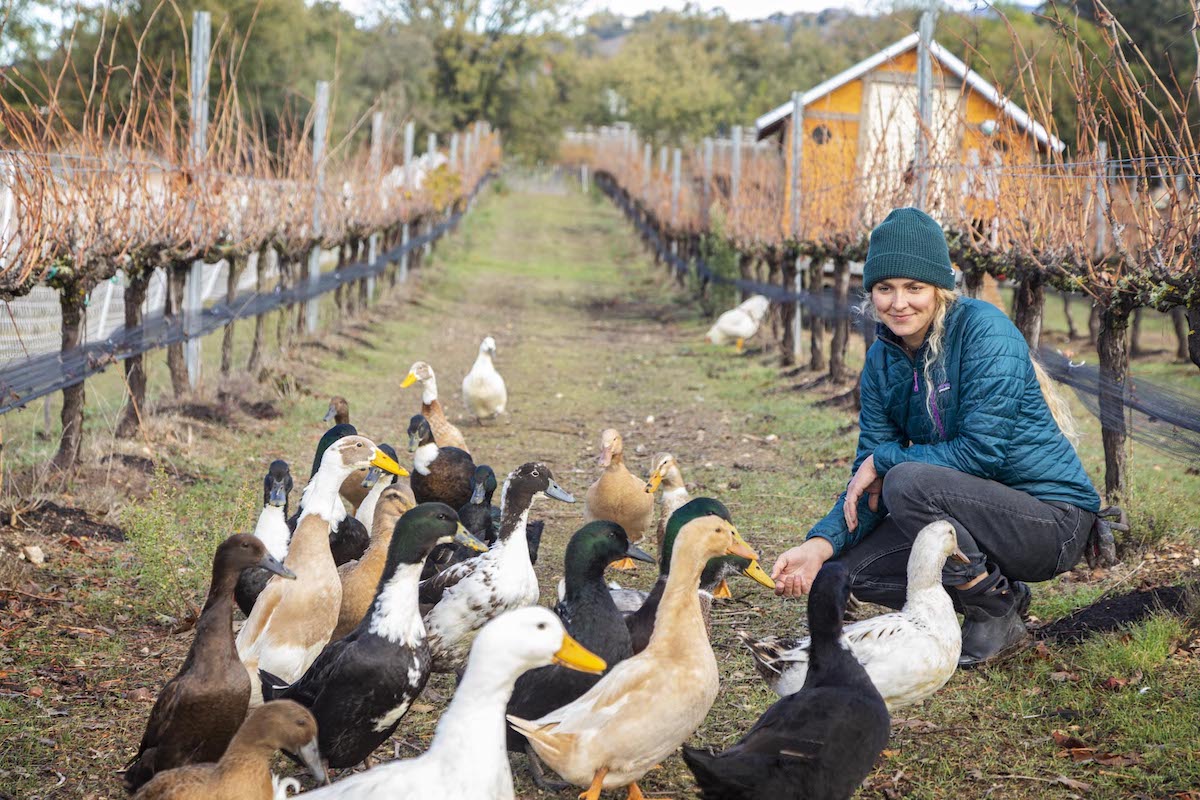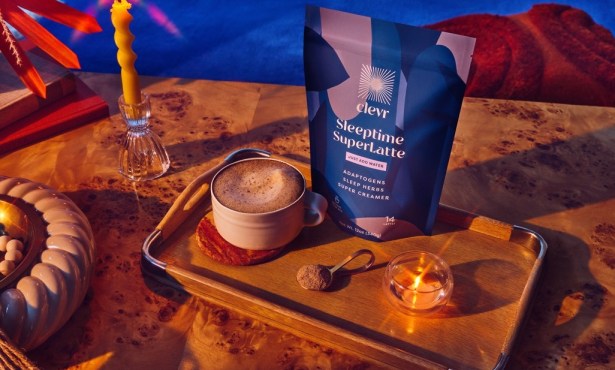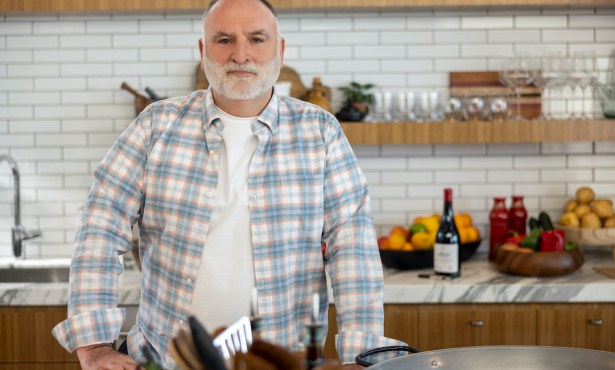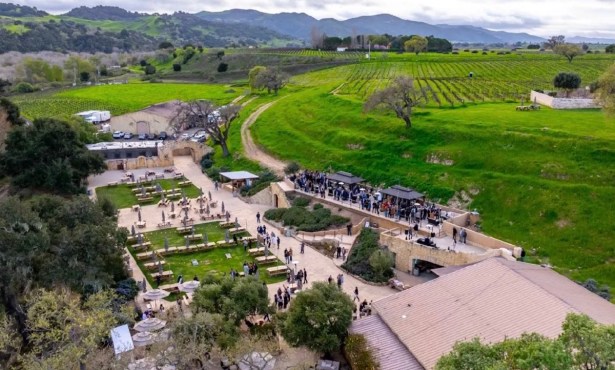Breathing Life and Soul into Ibarra-Young Vineyard
Alice Anderson Now Farming Historic Santa Ynez Valley Vines, Making Âmevive Wine

Alice Anderson probably doesn’t know that she has dirt and maybe even shit on her nose when she welcomes me to the Ibarra-Young Vineyard in the heart of the Santa Ynez Valley. But I don’t think she cares, either.
Her hands and shirts and boots and jeans are muddy too, and she’s beaming with delight about spreading the latest natural soil treatment on the vines. The first thing she wants me to see is her cow-pat pit — a brick-lined hole in the ground filled with manure for compost teas, a system she learned while making wine in New Zealand. Before I leave the property, which is near the Beckmen Vineyard inside the Los Olivos District appellation, we’ll have looked at how her chickens scratching the space between rows is better than tilling and why her colorful ducks are most valued in vineyards for their particularly fecund feces.
These are just some of the tools that Anderson is using to return this historic property back to optimal health. Planted as one of the earliest vineyards in the region in 1971 by owner Charlotte Young (who died in 2017) and vineyard manager Miguel Ibarra (who retired and moved to Mexico in 2016), the original cabernet sauvignon and sauvignon blanc vines were later grafted over to syrah, mourvèdre, and marsanne, with suitcase clones of tempranillo and graciano coming later in the late 1990s. The grapes were primarily bottled by Bob and Louisa Lindquist for the Qupé, Verdad, and now Lindquist Family brands.
After decades of being farmed in a more conventional manner — frequent sprays, regular earth ripping, watering based on schedule rather than need — Anderson took over the 10-acre lease in 2020, intent on turning Ibarra-Young into a model of regenerative farming. She won the support of Young’s family, including one daughter who owns the popular farm The Garden Of… and a granddaughter who grows native plants and garlic as Yes Yes Nursery.
“It was a dust storm,” said Anderson of when she came to the land, which had become a nuisance to the family. But the Young descendants, she explained, “want to keep the vineyard to honor their mom.”
Critical to the regenerative philosophy is building up healthy soils, which is better for the vineyard, because they deliver all sorts of nutrients and nuance to the grapes. It’s also better for the earth, as regenerative methods capture rather than release carbon, eliminate the need for synthetic fertilizers and fungi-/herbi-/pesticides, and tend to require less water. Hence all the dirt and poop everywhere.

Credit: Macduff Everton
“We’re totally responsible for everything that happens on this land now,” said Anderson, who grew up with horses and farm animals in Modesto and studied ag and wine at Cal Poly. Encouraged to consider winemaking by her mom, who designed wine labels for brands such as Gallo and Mondavi, Anderson interned in Napa Valley at Duckhorn in 2013, worked at Edna Valley’s Center of Effort during college, and then took off for New Zealand, which led to two years in France’s Northern Rhône.
“I fell in love with the idea of farming with a horse,” said Anderson of her French period. She’s not quite there yet at Ibarra-Young, but there’s hope. “Ahh,” she mused, “one day….” Upon returning to California, Anderson worked at Tyler Winery, A Tribute to Grace, and Tatomer, where she started in 2019 and remains to this day.
While getting her hands dirty in the vineyard, Anderson is keeping her wine clean under the label Âmevive. The name is a portmanteau of sorts, combining words for “soul” and “living.” “Together,” she explained, “they make a made-up French word.”
Since her inaugural 2019 vintage, Anderson has grown the brand from 200 cases of a couple of wines to nearly 1,000 cases of eight wines for 2021. About half of her fruit comes from Ibarra-Young — she sells the rest mostly to the Lindquists and Scar of the Sea’s Mikey Giugni, her Cal Poly buddy — and the rest is from around the county, such as gamay from Shokrian Vineyard near Los Alamos and grenache blanc from Buttonwood. Most of her wine is varietal-driven, but she makes some Rhône blends as well, such as the fermented field blend of Ibarra-Young marsanne, syrah, and mourvèdre that she calls “Périphérie.”
Sign up to get Matt Kettmann’s Full Belly Files, which serves up multiple courses of food & drink coverage every Friday, going off-menu from our regularly published content to deliver tasty nuggets of restaurant, recipe, and refreshment wisdom to your inbox
We tasted through her latest wines toward the end of my visit, and they’re all bursting with freshness and verve. Anderson recommends that most of them be served with a light chill, and while she’s not a huge fan of the label “natural wine,” the Âmevive bottlings certainly lean in that direction: more tart than ripe, more tactile than smooth, sometimes sulfur-free. “None of the wines are big on the California scale,” she said.
They pair perfectly with the respectful intention that Anderson is bringing to Ibarra-Young, where those chickens and ducks do the dirty work every day, all under the constant threat of bobcats, coyotes, and hawks. “It definitely brings a happy energy,” said Anderson of her feathered friends. “You feel like a little kid when you put the ducks away.”
The real results of her efforts won’t be known for a few more years, but there’s already a revitalized spirit to this hallowed ground. “Nature takes time, and this is no different,” said Anderson. “The roots need to find their new home.”
See amevivewine.com.
Support the Santa Barbara Independent through a long-term or a single contribution.




You must be logged in to post a comment.